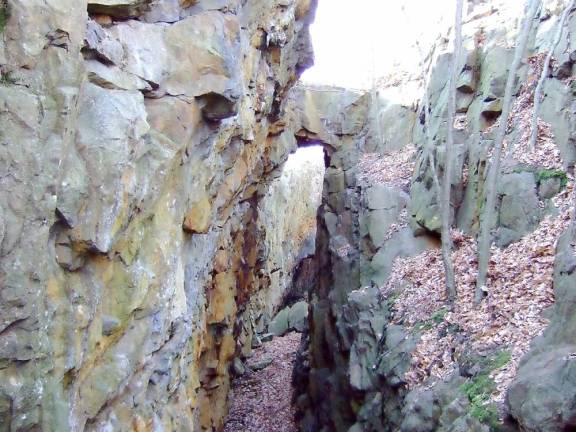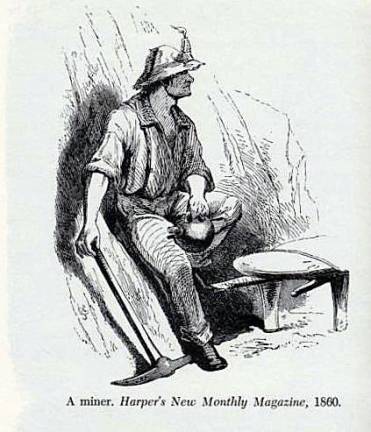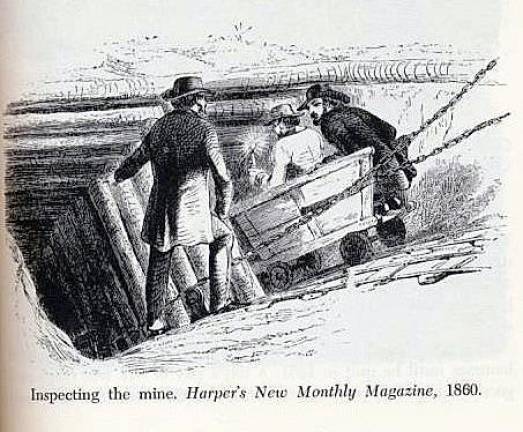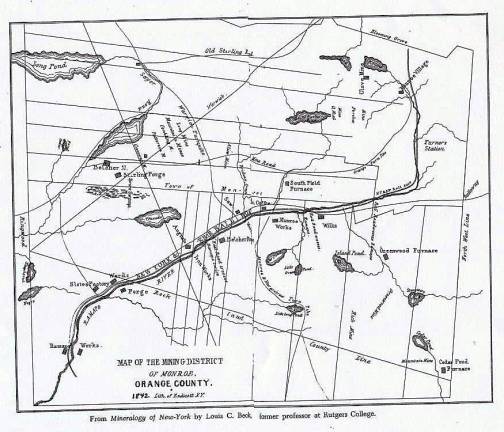



The Monroe Historical Society’s an annual mine tour will be Saturday, Oct. 9 , at 10 a.m. The tour includes the Mombasha Mine, O’Neil Mine and the Forshee Mine.
Everyone will meet at the Town Hall, 1465 Orange Turnpike, Monroe, the lower level.
The tour is free to the public, no reservations are necessary. The rain date will be Oct. 10, at 1 p.m. same location.
The tour guide will be Jim Rogers. In a piece for the Monroe History Society titled “Mining in Monroe,” Rogers wrote:
“Before 1700 most of the iron used by the colonists came from across the Atlantic, mostly from Britain. Its cost was high because of a shortage of wood for charcoal and also high shipping cost.
“In 1736, Cornelius Board, whose descendents still live in Monroe, was actually looking for gold and silver when he found outcroppings of iron ore. He explored up the Ringwood River to the foot of Sterling Lake. He purchased two tracts of land that included Sterling Lake and started manufacturing iron, probably the first ironworks in the state of New York.
“Here in the Ramapos (Indian for Land of Slanting Rock) was part of the answer to the high cost of imported iron. The iron deposits here were what geologists call magnetite, a form of iron oxide with the highest known content of iron. It could be mined easily; it could be smelted by familiar techniques and unlimited quantities of wood were available to make charcoal fuel. These were the ingredients for profitable iron making.
“The Ramapos also provided swift streams that would provide waterpower for bellows, tripping hammers and sawmills.
“Last but not least, lime was available for fluxing the blast.
“Another important fact was that the iron found in the Ramapo Mountains was close to the Hudson River for transport. Monroe’s boundaries extended to Stony Point on the Hudson River in those days.”
To read the entire article, visit: www.monroehistoryny.org/mining-in-monroe.